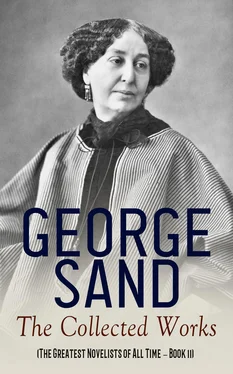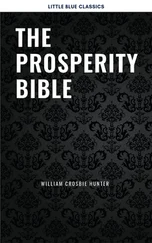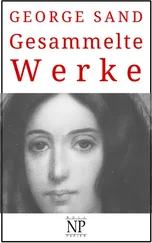But we are coming to the third day of the wedding-feast, which is the most interesting of all, and has been retained in full vigor down to our own day. We will say nothing of the slice of toast that is carried to the nuptial bed; that is an absurd custom which offends the modesty of the bride, and tends to destroy that of the young girls who are present. Moreover, I think that it is a custom which obtains in all the provinces and has no peculiar features as practised among us.
Just as the ceremony of the livrées is the symbol of the taking possession of the bride's heart and home, that of the cabbage is the symbol of the fruitfulness of the union. After breakfast on the day following the marriage-ceremony, comes this strange performance, which is of Gallic origin, but, as it passed through the hands of the primitive Christians, gradually became a sort of mystery , or burlesque morality-play of the Middle Ages.
Two youths—the merriest and most energetic of the party—disappear during the breakfast, don their costumes, and return, escorted by the musicians, dogs, children, and pistol-shots. They represent a couple of beggars, husband and wife, covered with the vilest rags. The husband is the dirtier of the two: it is vice that has degraded him; the woman is unhappy simply and debased by her husband's evil ways.
They are called the gardener and the gardener's wife , and claim to be fitted to watch and cultivate the sacred cabbage. But the husband is known by several appellations, all of which have a meaning. He is called, indifferently, the pailloux , 7 because he wears a wig made of straw or hemp, and, to hide his nakedness, which is ill protected by his rags, he surrounds his legs and a part of his body with straw. He also provides himself with a huge belly or a hump by stuffing straw or hay under his blouse. The peilloux because he is covered with peille (rags). And, lastly, the païen (heathen), which is the most significant of all, because he is supposed, by his cynicism and his debauched life, to represent in himself the antipodes of all the Christian virtues.
He arrives with his face daubed with grease and wine lees, sometimes swallowed up in a grotesque mask. A wretched, cracked earthen cup, or an old wooden shoe, hanging by a string to his belt, he uses to ask alms in the shape of wine. No one refuses him, and he pretends to drink, then pours the wine on the ground by way of libation. At every step, he falls and rolls in the mud; he pretends to be most disgustingly drunk. His poor wife runs after him, picks him up, calls for help, tears out the hempen hair that protrudes in stringy locks from beneath her soiled cap, weeps over her husband's degradation, and reproaches him pathetically.
"You wretch!" she says, "see what your bad conduct has reduced us to! It's no use for me to spin, to work for you, to mend your clothes! you never stop tearing and soiling them. You have run through my little property, our six children are in the gutter, we live in a stable with the beasts; here we are reduced to asking alms, and you're so ugly, so revolting, so despised, that soon they will toss bread to us as they do to the dogs. Alas! my poor mondes [people], take pity on us! take pity on me! I don't deserve my fate, and no woman ever had a filthier, more detestable husband. Help me to pick him up, or else the wagons will crush him like an old broken bottle, and I shall be a widow, which would kill me with grief, although everybody says it would be great good fortune for me."
Such is the rôle of the gardener's wife and her constant lamentation throughout the play. For it is a genuine, spontaneous, improvised comedy, played in the open air, on the highways, among the fields, seasoned by all the incidents that happen to occur; and in it everybody takes a part, wedding-guests and outsiders, occupants of the houses and passers-by, for three or four hours in the day, as we shall see. The theme is always the same, but it is treated in an infinite variety of ways, and therein we see the instinct of mimicry, the abundance of grotesque ideas, the fluency, the quickness at repartee, and even the natural eloquence of our peasants.
The part of the gardener's wife is ordinarily entrusted to a slender, beardless man with a fresh complexion, who is able to give great verisimilitude to the character he assumes and to represent burlesque despair so naturally that the spectators may be amused and saddened at the same time as by the genuine article. Such thin, beardless men are not rare in our country districts, and, strangely enough, they are sometimes the most remarkable for muscular strength.
After the wife's wretched plight is made evident, the younger wedding-guests urge her to leave her sot of a husband and divert herself with them. They offer her their arms and lead her away. Gradually she yields, becomes animated, and runs about, now with one, now with another, behaving in a scandalous way: a new moral lesson—the husband's misconduct incites and causes misconduct on the part of his wife.
The païen thereupon awakes from his drunken stupor; he looks about for his companion, provides himself with a rope and a stick, and runs after her. They lead him a long chase, they hide from him, they pass the woman from one to another, they try to keep her amused, and to deceive her jealous mate. His friends try hard to intoxicate him. At last, he overtakes his faithless spouse and attempts to beat her. The most realistic, shrewdest touch in this parody of the miseries of conjugal life, is that the jealous husband never attacks those who take his wife away from him. He is very polite and prudent with them, he does not choose to vent his wrath on any one but the guilty wife, because she is supposed to be unable to resist him.
But just as he raises his stick and prepares his rope to bind the culprit, all the men in the wedding-party interpose and throw themselves between the two. Don't strike her! never strike your wife ! is the formula that is repeated to satiety in these scenes. They disarm the husband, they force him to pardon his wife and embrace her, and soon he pretends to love her more dearly than ever. He walks about arm-in-arm with her, singing and dancing, until a fresh attack of intoxication sends him headlong to the ground once more: and with that his wife's lamentations recommence, her discouragement, her pretended misconduct, the husband's jealousy, the intervention of the bystanders, and the reconciliation. There is in all this an ingenuous, even commonplace, lesson, which savors strongly of its origin in the Middle Ages, but which always makes an impression, if not upon the bride and groom,—who are too much in love and too sensible to-day to need it,—at all events, upon the children and young girls and boys. The païen so terrifies and disgusts the girls, by running after them and pretending to want to kiss them, that they fly from him with an emotion in which there is nothing artificial. His besmeared face and his great stick—perfectly harmless, by the way—makes the youngsters shriek with fear. It is the comedy of manners in its most elementary but most impressive state.
When this farce is well under way, they prepare to go in search of the cabbage. They bring a hand-barrow, on which the païen is placed, armed with a spade, a rope, and a great basket. Four strong men carry him on their shoulders. His wife follows him on foot, the ancients come in a group behind, with grave and pensive mien; then the wedding-party falls in two by two, keeping time to the music. The pistol-shots begin again, the dogs howl louder than ever at sight of the unclean païen , thus borne in triumph. The children salute him derisively with wooden clogs tied at the ends of strings.
Читать дальше












